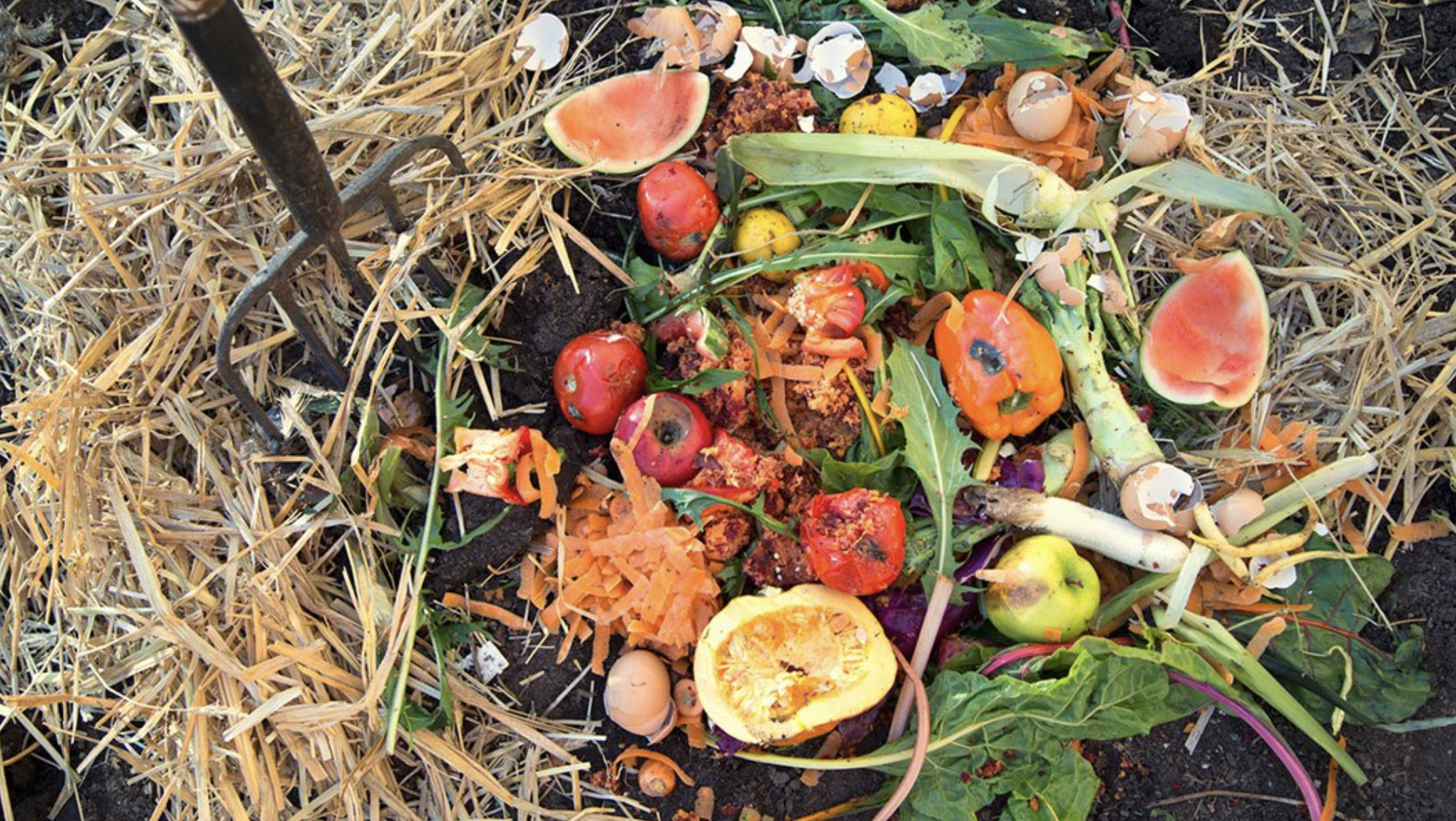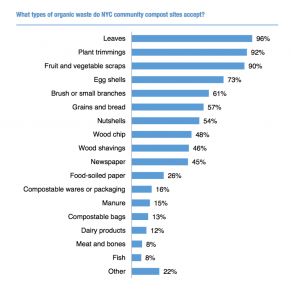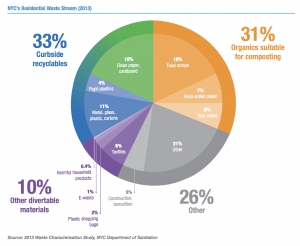https://www.lesecologycenter.org/pumpkin-smash-2017/
Field action proposal:
For my field action, I plan to volunteer at the Lower East Side Ecology Center and help turn organic waste into compost for city parks and green spaces around NYC.
Experience:
I wanted to see what compost can do for a city such as NYC. Back home my parents always composted in our backyard and my school division always was super eco friendly. So it will be interesting to see and research about how composting can be beneficial all around.
Lilian Liu
Field Action
December 1st, 2017
Field Action – Compost in the city
On Saturday morning, November 4th, 2017, I attended at an event called the Pumpkin Smash 2017 with the Lower East Side Ecology Center to learn about how compost is saving and making the city more sustainable. The event had started around 10:00am and lasted till 1:00pm, I arrived a little bit later than 10:00am and stayed as long as I could but I had to leave to attend a group project. They had places where people could sign in and get a tag that said we were volunteers at the event. We started right away, they had different compost bins where we can place the smashed pumpkins in, but they also had others for people to bring bags of their own compost. The event was really more for children but in a sense it’s a good way to stimulate kids to learn about compost in their city. I wanted to go into more research about the Lower East Side Ecology Center and how composting can affect a city such as New York City.
The Ecology Center also known as Outstanding Renewal Enterprises, Inc., was founded in 1987. The center works towards finding more ways to make New York City sustainable by providing community-based recycling and compost programs. They increase community awareness, provide and develop local green spaces and have the involvement of the youth through environmental education programs. They had become one of the first organizations in New York CIty to offer programs that were community-based recycling and composting. Today, the Ecology Center offers a wide range of services and education for environmental subjects such as composting, electronic waste recycling, and stewardship of public green spaces. They focus on providing opportunities such as the pumpkin smash event for all New Yorkers to learn about the environmental issues that faces the city.
Because of organizations such as the Ecology Center, they are able to set up specific sites where people can rid of their compost. Seen below is a chart from the NYC Community Composting Report 2014 shows the percentage of what most compost sites accept what types of organic waste.
Composting is nature’s way of recycling. It’s a natural biological process that is carried out under controlled conditions. Various microorganisms such as bacteria and fungi, break down organic matter into simpler substances. The essential elements required by the composting microorganisms are carbon, nitrogen, oxygen and moisture. If any of these elements are not provided in the proper proportion, microorganisms will not flourish and will not provide adequate heat to complete the process of composting. When the process of composting is performed in well conditions, it will convert organic matter into stable compost that is odor and pathogen free, and breeding ground for flies and other insects. In addition, composting significantly reduce the volume and weight of organic waste and converts as much of the biodegradable component into carbon dioxide. There are many forms and methods to convert organic waste into compost. Methods such as hot, cold, sheet, trench composting are mostly common used in areas where this large amounts of agriculture. The most common form of composting is loading the bin or windrow, which is basically what most homeowners use if they do compost. Compost can be very essential to places such as agriculture, horticulture, landscaping and home gardening. Some compost can be used in ways for erosion control and roadside landscaping, while other types of compost can be used as a landfill cover or in land reclamation projects.
New York City in most recent years have stepped up their game with composting. The city already has green and blue bins for different types of recycling, but now brown bins are starting to appear all over the city for organic waste material. These brown bins are part of a multimillion-dollar campaign to cut down on reliance in landfills, greenhouse gas emissions, and turn food and yard waste into compost then into clean energy. The city spends almost $400 million dollars annually to ship about 14 million tons of waste that are collected by homes, schools, and government buildings into landfills as far as away as South Carolina or Texas. Most of the trash thrown away in the city is organics such as an apple core or greasy paper plates. The former mayor, Michael Bloomberg, began an administration program in 2013 to reach the city’s goals of sustainability, that is still continuing to this day by Mayor Bill de Blasio. He plans for an expansion of the program that could change how all New Yorkers deal with organic waste on a scale never seen in the United States. In 2016, about 23,000 tons of orange peels, apple cores, and other organic materials were collected hundreds and thousands of household, schools, and institutions. Many neighborhoods such as Brooklyn, Staten Island, and Stuyvesant Town-Peter Cooper Village have adopted the program with little resistance. Majority of the city’s organics will be sent to private facilities within the area, for now there about 10 different facilities that take in the city’s scraps, and the with the Sanitation Department helping out finding other facilities that could help and assist taking in waste for 2018. Within the year of 2017, the city has spent $27.7 million to distributing new bins, and educating more of the pubic and more resources to pick up and transport the organic waste. The city has focused on establishing restaurants, food manufacturers, hotels, stadiums, etc to separate organics by law.
Shown below is a pie chart showing the different types waste each New York CIty residence was throwing out their trash cans in 2013
The overall experience of this whole project was fascinating to see how much compost could affect a city such as New York City. I had fun seeing the joy of children using their frustration of “life” by smashing pumpkins, but really what I enjoyed most was the research into how compost is related to the activity of the city. I never realized that the city had made such efforts to compost until I went into more detail of seeing how much the city has made an effort into becoming a more sustainable economy. Personally, growing up, my parents always composted in our household no matter if it was inside the house or outside the household. My school division was always aware about being eco friendly to the environment, and it was interesting to see that the same effort about composting was being done in a city as large as this one. Lesson learned here, composting does more than you think. It reduces the weight of organic material and helps replenish the earth. Programs such as the Lower East Side Ecology Center is another step to helping the world become more sustainable by the day.


